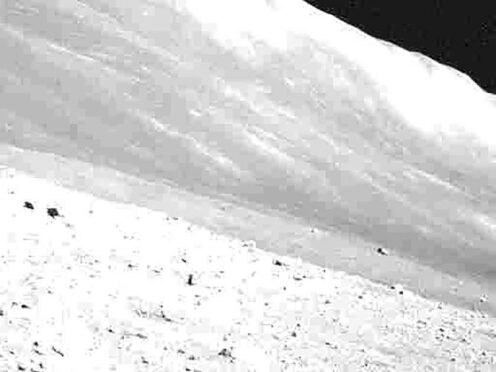Japan’s first moon lander has survived a third freezing lunar night, the country’s space agency said, after receiving an image from the device three months after it landed on the surface.
The Japan Aerospace Exploration Agency (Jaxa) said the lunar probe responded to a signal from Earth on Tuesday night, confirming it has survived another weeks-long lunar night.
Temperatures can fall to minus 170C during a lunar night, and rise to around 100C during a lunar day.
The probe, Smart Lander for Investing Moon (Slim), reached the lunar surface on January 20, making Japan the fifth country to successfully place a probe on the moon.
On January 20, Slim landed the wrong way up with its solar panels initially unable to see the sun, and had to be turned off within hours, but powered on when the sun rose eight days later.
Slim, which was tasked with testing Japan’s pinpoint landing technology and collecting geological data and images, was not designed to survive lunar nights.
昨晩(4/23 夜)、再び起動した #SLIM と通信することに成功し、SLIMが3回目の越夜を達成したことを確認しました。早速航法カメラにて撮影した昨晩の月面の様子がこちらです。越夜後としてはこれまでで最も早い月齢での撮影のため、全体的に明るく影が非常に短くなっています。 #JAXA #たのしむーん pic.twitter.com/U0f88xNK9S
— 小型月着陸実証機SLIM (@SLIM_JAXA) April 24, 2024
Jaxa said on the social media platform X that Slim’s key functions are still working despite repeated harsh cycles of temperature changes.
The agency said it plans to closely monitor the lander’s deterioration.
Scientists are hoping to find clues about the origin of the moon by the comparing mineral compositions of moon rocks and those of Earth.
The message from Slim came days after Nasa restored contact with Voyager 1, the farthest space probe from earth, which had been sending garbled data back to earth for months.
An US lunar probe developed by a private space company announced termination of its operation a month after its February landing, while an Indian moon lander failed to establish communication after touchdown in 2023.
